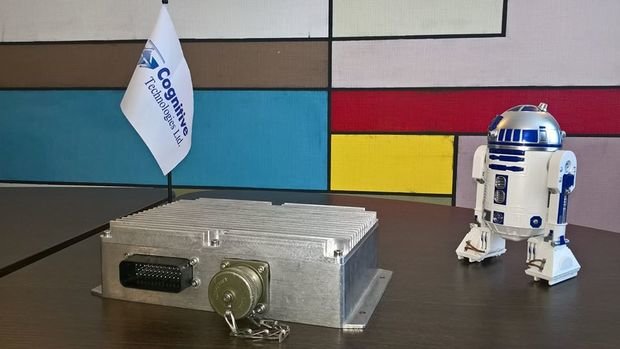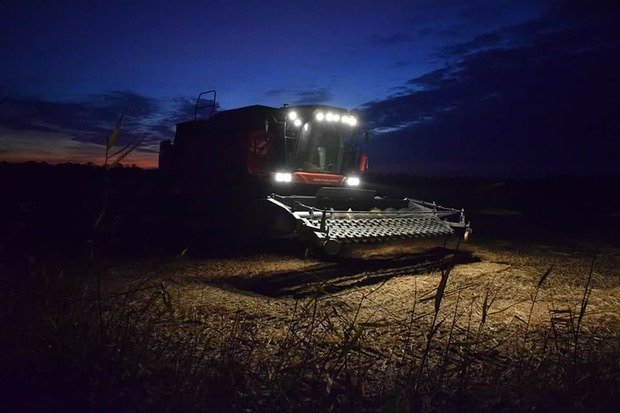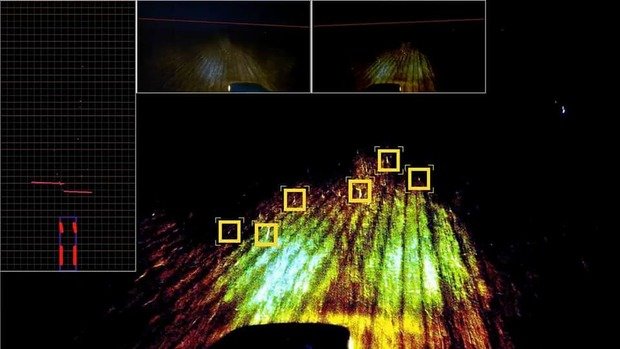''The unmanned system is more predictable and safer than the equipment run by a man''
Head of Cognitive Technologies on the future of agriculture, artificial brains instead of tractor drivers and unmanned vehicles in our fields
Russian Cognitive Technologies company that develops artificial intelligence for unmanned transport vehicles created Agrodroid C2-A2 system that turns any agricultural machinery into an unmanned vehicle. Realnoe Vremya talked to director of the company, expert in autonomous driving systems Olga Uskova who told about the new development in detail and why artificial brain was more reliable than a tractor driver, the similarity of Agrodroid with R2-D2 from Star Wars and whether the system would be tested in Tatarstan fields.
''The main task is to provide autonomous movement without human intervention''
Mrs Uskova, could you explain our readers what Agrodroid is and why it is different from existing solutions?
All existing robotised agricultural solutions are based on GPS and technical vision now. Undoubtedly, this enables to culture the field. However, this doesn't provide a necessary security level. If you want equipment not to run down a person who fell asleep in the rye or children playing in the field, you will have to additionally provide it with a serious number of sub-sensors, which sharply increases your costs.
If speaking about our solution, the neural network was first used in small NVIDIA Jetson TX2 – it's an artificial brain, in fact. Agrodroid uses one camera, it doesn't need either radars or lidars. This is why the end price of the device is $3,000.
Another important moment is that the system is made according to the principle of cradle. An analogy with R2-D2 suggests itself here: if you watched Star Wars, you remember this droid that rode on wheels all day long, and then when they needed to fly from one planet to another planet, it was connected to the socket of any spacecraft, and it joined the ship management system. The situation here is the same: C2-A2 can be taken off, for instance, a tractor and put into a seeding, watering machine and so on. This system hasn't been used anywhere in the world, though it's very comfortable, especially for small farms.

''The situation here is the same: C2-A2 can be taken off, for instance, a tractor and put into a seeding, watering machine and so on. This system hasn't been used anywhere in the world.'' Photo: facebook.com
What possibilities does it give to agriculture? Is your development mainly designed for small farms or vice versa?
We created Agrodroid for both. We started to supply the solution for combine drivers last year – it's a huge system with complicated functions and uneasy settings. Plus, the combine itself is quite expensive. This is why all this story was expensive for a middle-sized farm. In addition, we have quite a wide market of tractors (there are about 30 million tractors used in agricultural works in the world) whose price is notably lower, thanks to which they are purchased by farmers on their own. But in case of the new product, it doesn't matter if it's a combine, tractor or another equipment. The main task is to provide autonomous movement without human intervention.
''It will likely be a tractor driver who will get drunk, what will put the system out of order''
How widely are unmanned solutions used in Russian agriculture now?
Now we're finishing an experimental process in Tatarstan Soyuz-Agro. That's it, I don't know other examples. In general, we're ready to prepare supplies of our solutions. Speaking about the new device, we are precisely collecting a list of orders – several regions have already placed a pre-order.
If only unmanned vehicles start to ride in our fields, what should combine and tractor drivers do? Where should they go to? Won't we have a repetition of the piece from Nu, Pogodi! cartoon with a mad tractor riding in the yard?
I will start with the second question, as it's easy. It will likely be a tractor driver who will get drunk and drive fast in the mad tractor in the yard, which will hack the system and put it out of order. It's an expensive and complicated system, which was done offline – it doesn't communicate with the cloud. It's very difficult to enter it. It's much easier to ply a person with alcohol, put him at the wheel and launch, what we, unfortunately, see in the majority of sad cases. In this case, the unmanned system is more predictable and safer than the equipment run by a man.

''It will likely be a tractor driver who will get drunk and drive fast in the mad tractor in the yard, which will hack the system and put it out of order. It's an expensive and complicated system, which was done offline – it doesn't communicate with the cloud.'' Photo: facebook.com
As for changing the structure of the working force in the countryside, it's quite a painful issue. But this will happen anyway because everybody will aspire to optimise profit in accordance with competitive prices. If at a moment grain from another country starts being cheaper because they optimised their cultivation costs, their grain, not ours, will be purchased. This is why the way itself is irreversible. There aren't options.
And it's rubbish we have a queue of tractor drivers in the countryside. Actually, we have a serious shortage of qualified personnel, which results in serious blackmail from those who already work. Russia has a lot of land, and it's finally started to be handed out. However, infrastructure is needed, so that a person will feel he is a farmer. The cheaper and more effective it will be, the more medium-sized and small farms there will be. In this context, unmanned vehicles are only a way. A person doesn't need to hire anybody and he can deal with a medium-sized farm with his family on his own.
It was said you planned to have industrial tests of C2-A2 in Russia and Brazil this summer. As for Russia, where will it be?
It's Rostov Oblast. It's a choice of our reliable partner – it's a farm that needs to submit an application. We see that New Zealand, Argentina, Brazil have already placed an order, there are also negotiations with Canada – they all will certainly come to see. And now the situation is so that people will go to Rostov to get it.
I want to say it's not a political issue. It's a matter of money. Those who count money, those who are interested in efficiency and profit per capita, those who want to develop a variety, not ask for budgets, those who want to make their farm really profitable react to innovations very fast. Everything is calculated very easily in agriculture. A person who stands on the land certainly knows his profitability norm, the size of the loss of harvest from a subjective factor (a tractor driver didn't go to work, started to drink, missed the time to cultivate the field), how much he loses in robbery a year (while it's quite a serious percentage of losses).

''Those who count money, those who are interested in efficiency and profit per capita, those who want to develop a variety, not ask for budgets, those who want to make their enterprise really profitable react to innovations very fast.'' Photo: facebook.com
This all has been studied by us in detail when we launched this line. We closely worked with the Agricultural Academy, with specific farmers. Soyuz-Agro also helped us very much – it's one of the advanced farms. In general, it's interesting to work with such enterprises because, as a rule, they are chaired by involved directors who aspire to make a correct innovative model. Soyuz-Agro is an excellent enterprise, it can be a prime site where foreigners will come to in order adopt the experience.